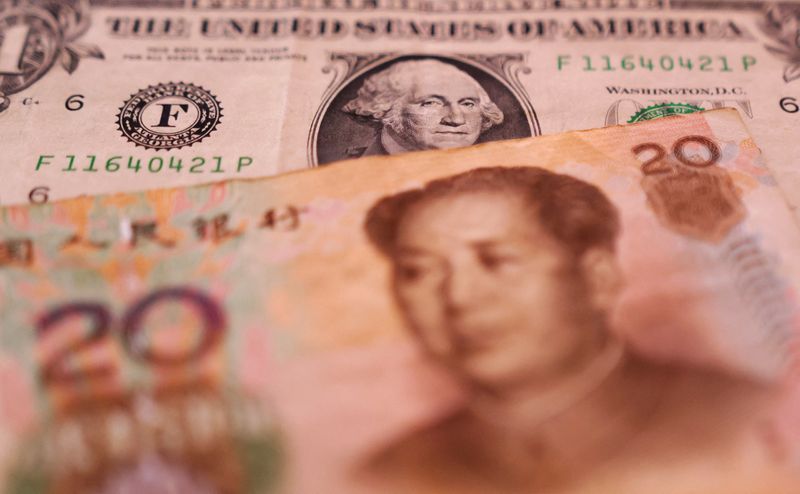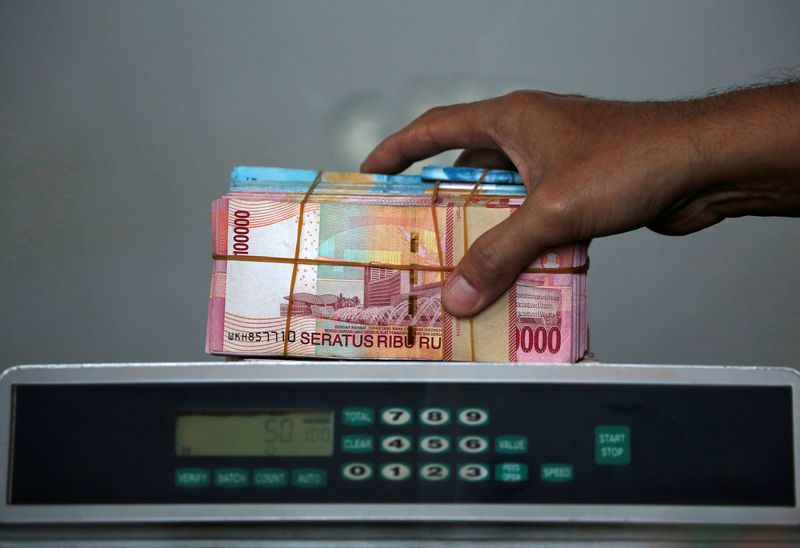Month: April 2024
Hong Kong Bitcoin ETFs to Trade by April 30th: Reports
Hong Kong’s highly anticipated spot bitcoin exchange-traded funds (ETFs) are slated to launch by the end of April, according to various industry sources.
NEW: 🇭🇰 Hong Kong #Bitcoin ETFs to start trading by 30th April and could bring in $25 billion: Reports
Just a matter of time 🚀 pic.twitter.com/Y1Xo4JVrO7
— Bitcoin Magazine (@BitcoinMagazine) April 17, 2024
The Hong Kong Securities and Futures Commission (SFC) recently approved several fund managers to offer spot bitcoin ETFs. Following this, OSL, a crypto infrastructure provider for some approved fund managers, stated that the bitcoin ETFs are aiming to go live as early as late April.
Markus Thielen, founder of research firm 10x, also stated that the Bitcoin ETFs could start trading by April 30th. The launch timeline will depend on finalizing details with regulators.
Once listed, analysts predict the accessible funds could attract significant capital inflows. Singapore-based Matrixport expects mainland Chinese investors to pour up to $25 billion into Hong Kong’s Bitcoin ETFs via the Southbound Stock Connect program.
Thielen echoed this sentiment, stating the ETFs could yield $25 billion if fully accessible to Chinese investors. However, he noted that Chinese participation may take at least six months due to evolving regulations.
Nonetheless, the ETFs mark a milestone for Bitcoin adoption in Asia. They provide regulated exposure to bitcoin, opening the assets to a broader range of investors.
The funds’ unique in-kind redemption feature also makes them competitive globally. This allows swapping bitcoin directly for ETF shares, increasing efficiency.
Click the image to learn more.
By approving the ETFs, Hong Kong cements its position as a rising Bitcoin hub. The city is moving swiftly to license Bitcoin companies and products amid growing demand.
With bitcoin’s next halving just days away, the ETF launch timing is opportune. Many predict the supply shock event will propel Bitcoin to new highs, benefiting linked investment vehicles.
If successful, Hong Kong’s spot ETFs could prompt other Asian jurisdictions to follow suit. The domino effect would boost regional participation and maturity for the Bitcoin market.
Breaking Down The 2024 Bitcoin Halving: Implications and Predictions for Bitcoin Miners
The Bitcoin halving event, a pivotal occurrence, is scheduled for April, 19 2024. This quadrennial event will reduce the block subsidy for Bitcoin miners from 6.25 BTC to 3.125 BTC, thereby halving the reward that miners receive for their efforts. Such events have historically led to profound shifts in the mining landscape, potentially influencing various economic and operational facets of Bitcoin mining.
Economic Outlook and Market Predictions
After the halving, the immediate impact is a considerable decrease in miner revenue due to the reduced block subsidy. This could lead to a decline in the hashrate as less efficient miners may turn unprofitable and exit the network. Luxor’s Hashrate Index Research Team projects about 3-7% of Bitcoin’s hashrate could go offline if Bitcoin’s price maintains its current level. However, if prices fall, up to 16% of the hashrate could become economically unviable, depending on the trajectory of Bitcoin prices and transaction fees post-halving.
The hashrate, a critical security measure for Bitcoin, might adjust along with difficulty levels to align with the new economic realities. Luxor’s analysis suggests different scenarios where the network’s hashrate could end up ranging from 639 EH/s to 674 EH/s by year’s end, reflecting adjustments to the new earning potential post-halving.
ASIC Pricing and Breakeven Points
Post-halving, the profitability of different ASIC models will become crucial as the mining reward drops. Lower rewards mean that only the most efficient machines will be able to operate profitably if the price of Bitcoin does not see a significant increase. For instance, according to Luxor’s projections, next-generation ASICs like the S19 XP and M30S++ might have breakeven power costs ranging from $0.07/kWh to $0.15/kWh, depending on post-Halving hashprice.
This shift in profitability will likely lead to a repricing of ASIC machines. Historical data suggests that ASIC prices are highly correlated with hashprice; therefore, the anticipated reduction in hashprice will prompt a downward adjustment in ASIC values. This will particularly impact older and less efficient models, potentially accelerating their phase-out from the market.
The Role of Custom ASIC Firmware Post-Halving
To combat reduced profitability, miners are increasingly turning to custom ASIC firmware to improve the efficiency of their hardware. Firmware like LuxOS and BraiinsOS can enhance the performance of machines by optimizing their power usage and hashrate output, thus lowering the breakeven point for electricity costs. For example, underclocking an S19 with custom firmware could extend its operational viability by reducing its power draw, thereby maintaining profitability even at lower hashprices.
Public miners, in particular, are adopting custom firmware to boost the efficiency of their fleets. Companies like CleanSpark and Marathon have reported using custom solutions to enhance their operational efficiencies. This trend is expected to grow as more miners seek to maximize their output and minimize costs in the face of decreasing block rewards.
2024 Bitcoin Halving and Beyond
The 2024 Bitcoin Halving is set to reshape the mining landscape significantly, just as previous halvings have. While the exact outcomes are uncertain, the event will undoubtedly present both challenges and opportunities. Miners who plan strategically, taking into account both economic forecasts and operational efficiencies, will be better positioned to navigate the post-halving environment. For those in the Bitcoin mining industry, staying informed and adaptable will be key to leveraging the halving event as an opportunity rather than a setback. With the right preparations, particularly in ASIC management and firmware optimization, miners can continue to thrive even under tightened economic conditions.
This is a guest post by El Sultan Bitcoin. Opinions expressed are entirely their own and do not necessarily reflect those of BTC Inc or Bitcoin Magazine.
Dylan LeClair: Bitcoin Bull Market Dip or Cycle Regime Shift?
This article is written in partnership with Unchained, the official US Collaborative Custody Partner of Bitcoin Magazine and integral sponsor of related content published through Bitcoin Magazine. For more information on services offered, custody products, and the relationship between Unchained and Bitcoin Magazine, please visit our website.
Bitcoin tumbled below $60,000 over the weekend, fueled by conflict between Iran and Israel, sparking fears that escalation could lead to Western involvement in a war in the Middle East—an all too common occurrence in the 21st century that would lead to increased inflationary pressures and disrupt global supply chains and commodity markets. While skeptics were quick to mock bitcoin’s near instantaneous selloff in reaction to the news of conflict, ironically bitcoin was one of the only global asset open for trading on the weekend, with equities, commodities, and bond strategists alike turning their eyes to the bitcoin chart in an attempt to assess what the damage might be to global markets upon the Sunday night trading open.
Turning away from geopolitics, this brief article will take a look at the latest in on-chain spending behavior and Bitcoin derivative markets, to analyze whether the current dip from the highs of $73,000 is typical of a standard bull market correction or more so a cyclical peak.
Many preconceived notions of a typical Bitcoin cycle have already been shattered with new highs being broken before the upcoming halving taking place on block 840,000. So let’s evaluate and take a look at where we are, and how these conditions and investor behavior also inform what might come next.
We’ll be looking at both on-chain data, to analyze the actions of incumbent Bitcoin hodlers and new market entrants alike, before taking a look at the derivatives market to gauge whether there is anything worrisome in regards to the leverage currently present in the market.
Unchained is the Official Collaborative Custody Partner of Bitcoin Magazine. Click here to learn more about Unchained’s bitcoin financial services and receive exclusive discounts on Unchained vault, Signature and IRA.
First, we’ll take a look at a metric called the Value Days Destroyed Multiple, coined and created by TXMC, which compares near-term spending behavior to the yearly average, as a means of detecting overheated and undervalued markets. A brief look at this signals that the bull market is well underway, and may have even peaked.
The exact calculation of the metric, for those curious, is the ratio of two daily moving averages (30, 365) of Value Days Destroyed (Coin Days Destroyed * Price), then adjusted for supply inflation to account for changes in spender behavior over time.
We can attribute approximately one third of the spending as a simple transfer of coins from the Grayscale Bitcoin Trust to new ETF participants like BlackRock, Fidelity, and Bitwise. However, the raw data is just that—the raw data, and we can see there has been a significant amount of spending that’s occurred with the push to new highs.
A closer look at the metric, however, shows that this spending activity is cooling off, and there is historical precedent for new highs in the market in both the 2017 and 2021 cycle – this is merely a data point to keep in mind.
Next, taking a look at the interplay between HODLers and new entrants, viewed through the lens of short-term and long-term holders, we can see that during a typical bull market, revisits to the cost basis of short-term holders are not only typical but also quite healthy.
Additionally, the ability for this approximate price level to serve as support is a characteristic of bull markets, with the inverse being true in a bear market, where this psychological level of average short-term holder price (cost basis) often serves as ironclad psychological and technical resistance. As for where that level is today, approximately $58,500, which means that by no means is a visit to this level a guarantee or certainty, but rather it is something that is perfectly in the norm of expected activity in a bull market.
Turning our attention to the derivatives market, there has been a healthy flush of leverage and speculative froth across the market. Perpetual futures open in bitcoin terms are near the lowest levels seen since 2022, while futures have been trading at a slight discount to spot markets since the weekend flush lower. While there is no law or guarantee that this brings about higher prices immediately, similar positioning in the past has fostered the conditions for price appreciation, and when compared to the top-heavy speculative froth of a speculative premium in futures market pricing observed over the last month or so, it is a welcomed development.
In terms of points of interest when eyeing the derivatives landscape, the buildup of liquidatable leverage above $70,000 continues to grow, with emboldened shorts looking to push price meaningfully below $60,000. While there is some leverage to be purged under the $60,000 level, the real prize for bears is under the $50,000 level.
While certainly crazier things have happened in Bitcoin than a -33% pullback from all-time highs, spot demand is likely to be strong from $50,000, and a wipe of open interest and the start of a negative futures premium relative to spot markets hint at most of the pullback having already taken place. It would likely take a significant risk-off moment across the macro landscape for this to unfold, and any dip is likely to be fleeting given the perpetuating reality of the pace of fiscal deficit spending.
Conclusion: This bull market has legs, and the current pullback from the highs, along with any future dips in the exchange rate, should be a welcomed development for investors with a sufficiently long time horizon who understand where this is all headed. Bitcoin’s fundamentals continue to improve, and pullbacks serve to purge leverage and weak handed speculators during secular bull markets.
BTFD.
This article is written in partnership with Unchained, the official US Collaboartive Custody Partner of Bitcoin Magazine and integral sponsor of related content published through Bitcoin Magazine. For more information on services offered, custody products, and the relationship between Unchained and Bitcoin Magazine, please visit our website.
China’s cycle of dollar hoarding and weakening yuan gets vicious
Post Content
ING predicts further NZD/USD weakness amid inflation data
Post Content
Dollar edges lower; sterling gains after CPI data
Post Content
UBS lowers EUR/USD forecast, sees more dollar strength in 2024
Post Content
ING raises dollar forecast amid US inflation concerns
Post Content
Analysis-Indonesia’s plunging rupiah twists the policy plot
Post Content
Asia FX muted, dollar at 5-mth high as Powell touts higher-for-longer rates
Post Content








